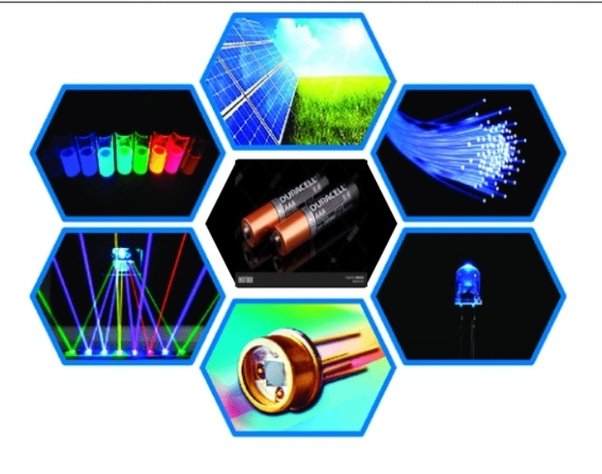Optoelectronics have become a vital part of our lives and today’s technology. Optoelectronic devices such as light-emitting diodes (LEDs), semiconductor lasers, photodetectors, and solar cells operate using interactions between electrons and photons. Today, optoelectronic devices take place in a vast range of applications from fiber-optic communication to medical applications and remote sensing systems. Optoelectronic devices are based on semiconductors.
The unique properties—controllable electrical conductivity and tailored bandgaps—make semiconductors indispensable in optoelectronic technology. Furthermore, using advanced lithographic techniques, it is possible to decrease the size of the semiconductors to nanometer scale, leading to fabricating high-capacity, fast, highly efficient, compact, and highly sensitive optoelectronic devices. Optoelectronics have been playing an increasingly important role in our lives since the discovery of observation light emission from a GaAs-based p-n junction, and today highly efficient LEDs illuminate the world as a light source of the 21st century.

- Créateur de cours: KHADIR ABDELKADER
